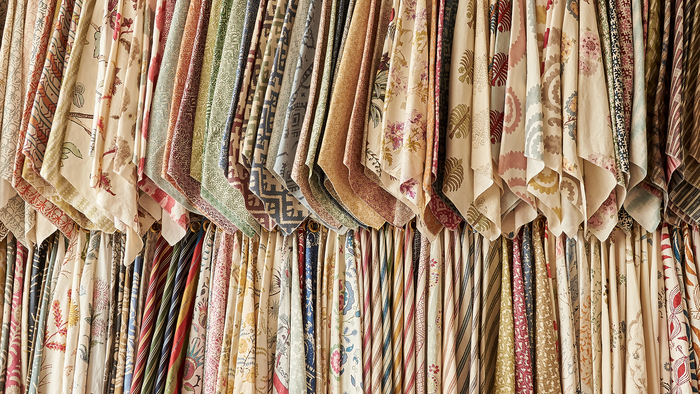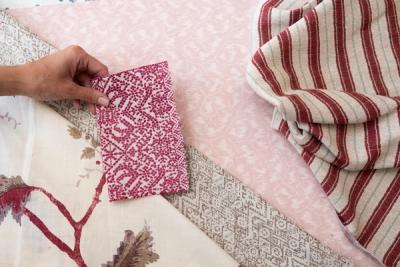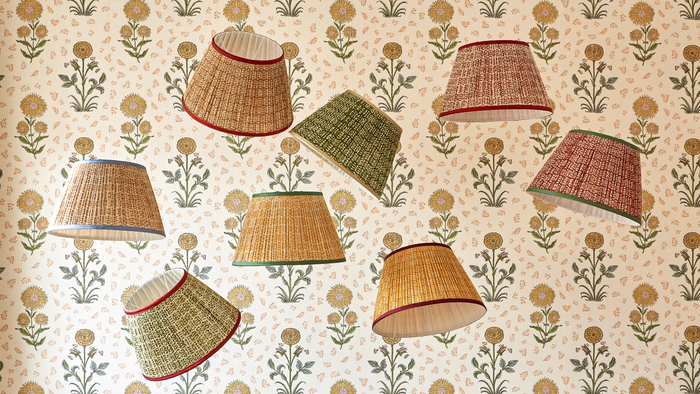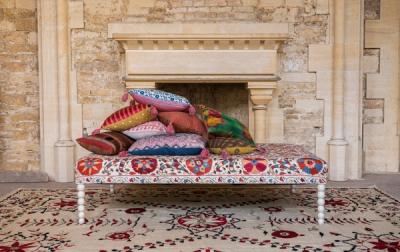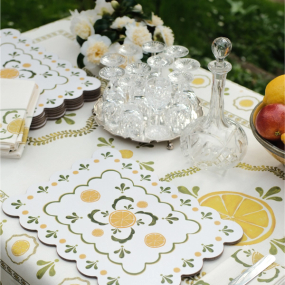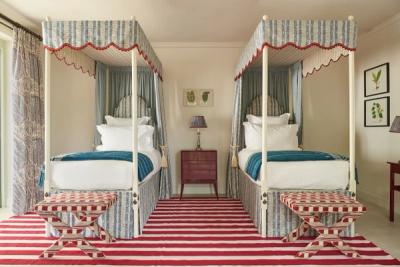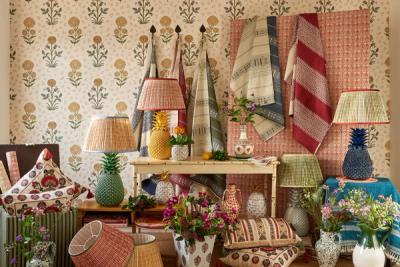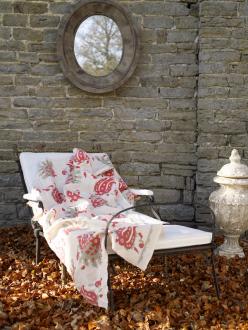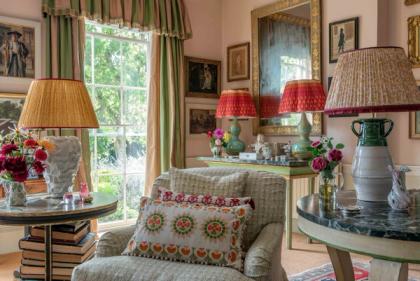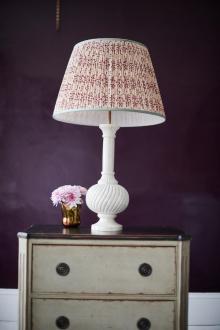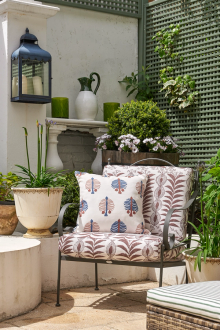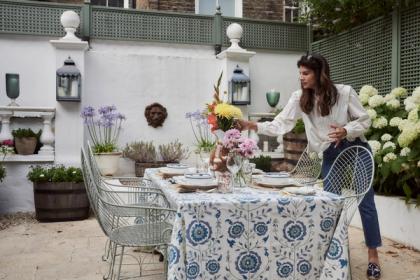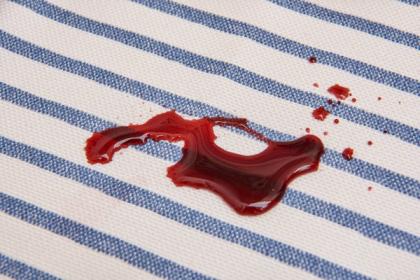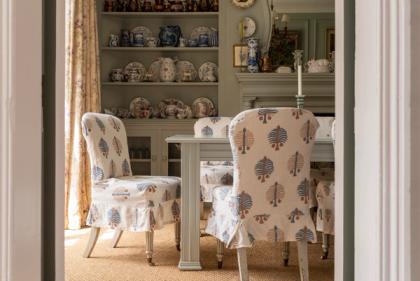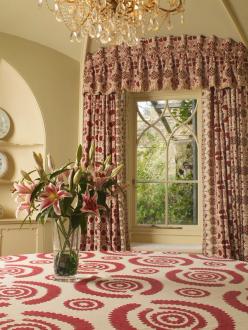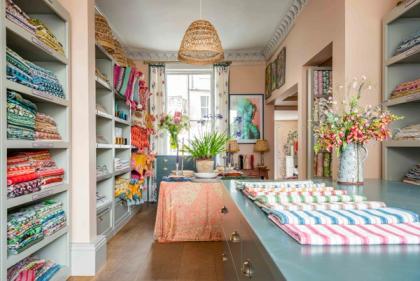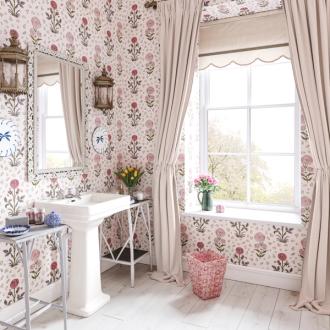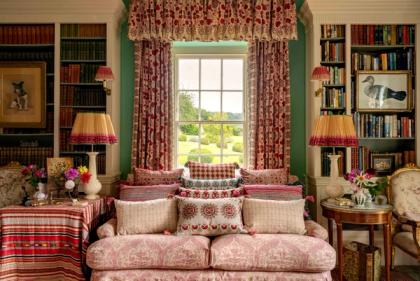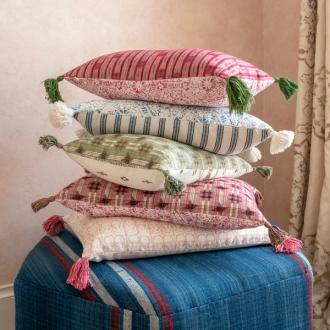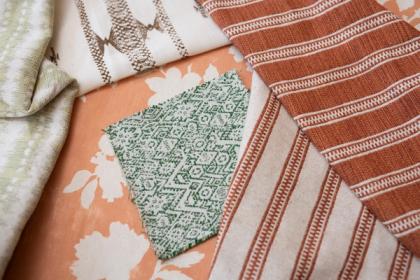The Penny Morrison Guide to Timeless Interior Design

The Penny Morrison Guide to Timeless Interior Design

So many of the most noteworthy interior design styles are tied to a very specific point in time. Avocado green and thick shagpile will always take us back to the seventies, while barn doors and shiplap can’t help but remind us of the Pinterest-oriented days of the early 2010s. We see the nineties in wall stencils and string curtains – the sixties in bold geometrics and rounded, bubbly silhouettes – and the beloved eighties in those Miami Vice shades of pink and turquoise.
It's no secret that these styles have a way of resurging, either intact, or in a more diluted form. Interior design choices that we couldn’t wait to get away from – that we thought would stay relegated to our grandparents’ homes – will inevitably pop back up, and take over the shop windows once again. Before we know it, we’re right back where we started, save for a few creative liberties taken with the more hard-to-sell aspects of past trends. Yes – that’s right – we’ve yet to see anyone take on the avocado bathroom again.
But what if we don’t want to wait on the next old trend? If we let ourselves get carried away by that cycle, we feel compelled to refurbish the house every few months. The internet is an ever-revolving door and, for most of us, it’s better to step out of it rather than getting dizzy with choices.
At Penny Morrison, our priority lies with lasting quality and timeless beauty, so here is everything you need to know about embracing it, and stepping away from that dizzying cycle.
What makes a timeless interior?
There are no specific features that an interior needs to have in order to be considered timeless. Instead, it’s about its resistance to trends, and the designer’s ability to create a beautiful scene, rather than one that would trend online. Typically, this translates to a clever mix of styles and features, instead of a room that embraces one particular style wholeheartedly.
In a room that comprises many different elements from many different periods, places, and styles, everything ‘dilutes’ the power of everything else, meaning nothing is used enough to date the room.
Timeless interiors tend to be free from any elements that are too strongly tied to a particular period. Again, think of the avocado bathroom fittings, or the Arne Jacobsen Egg Chair of the 1960s – the novelty-print, faux-velour sofas of the seventies in varying shades of orange and rust – and the glass bricks of the seventies (or the shagpile rugs and carpets, for that matter).
If it feels cliché then, in all likelihood, it’s going to date a room to a very particular time period, and look a little out of place alongside a more varied approach to décor. If recreating the suburban bliss of a 70’s family home is the name of the game then, by all means, embrace those clichés, but keep in mind that the 70s won’t always represent the height of style, and you’ll need to practice plenty of resilience there.
The short version is this. Timeless interior design is open to interpretation and personal taste, typically drawing together a wide variety of elements so that no single style or piece ‘defines’ the room.
The good news is that, in order to achieve a timeless look in your home, you don’t have to adapt to anything. It’s all about finding what you love and putting it all together.
What’s so special about timelessness in interior design?
Put simply, timeless interiors are special not only because they truly reflect the people who inhabit them – not just a particular style – but also because they are designed to outlast the trends by decades, rather than weeks or months.
Anyone can observe the trends, buy up an assortment of on-trend pieces from the fast retailers, and put together a room that looks in-keeping with whatever is at the top of the Pinterest board, Instagram or on the cover of the trend-oriented magazines. Yes, this sort of interior design is still a very tricky skill to perfect, but following isn’t.
In real homes, rather than staged photographs, timeless interior design says a lot more about the people behind it. Investing in quality and durability rather means rooms don’t feel like they need a refresh almost as soon as they are completed, and it gives you space to explore your own tastes first.
Timeless homes look:
These are the homes we remember – the ones we can’t help but admire when we visit friends and family. They are very special.

Timeless Interiors – the 7 Key Elements to Keep in Mind
If you’re looking to achieve timelessness in your home, then there’s no one particular area to focus on. Everything, from your lighting to your furniture, will feed-into that sense of endurance and classic beauty, so understanding how you can use each element is key.
Here are seven key elements to focus on.
1. Silhouettes
Shape and form are incredibly important. Some silhouettes are very recognisable – think back to those ‘cliché’ furniture pieces we talked about above – and are best avoided, unless you think you can temper them through the rest of your décor.
Our best advice is to introduce plenty of variation between your silhouettes. Matching furniture sets and silhouettes are much more easily tied to particular periods – and, besides that, tend to make a room feel as though it was decorated all at once, rather than over the years you’ve lived there – and that’s part of the reason why mis-matching furniture is more popular than ever.
There’s no one silhouette you should be aiming to track down and use within your home. Instead, being mindful about variation – but, at the same time, not prohibiting yourself from a piece you like just because it isn’t totally unique – is one of the best ways to avoid boxing your interiors into a corner and making them feel forced.
2. Patterns
Patterns can so easily date a room. We all know the flower power prints in orange, pink, and yellow of the 60s and 70s – the primary-coloured geometrics of the late 80s and 90s – the hyper-floral florals of our grandparents’ soft furnishings. They are, arguably, some of the most distinctive relics we have of times gone by – even more recognisable than silhouettes, or colour schemes.
But not every pattern out there needs to be considered ‘part’ of a particular movement or trend. Classic and enduring prints come in all shapes and sizes, and there are countless opportunities to blend different styles together.
In fact, pattern mixing it one of the best ways to create a timeless interior. When you stop trying to funnel your love of print into a very particular style, you can create an interior that speaks to your tastes – and you may be surprised how well everything fits together.
Classic florals on the walls can be tempered by the ever-versatile Ticking Stripe weave, or by abstracts inspired by the block printing techniques favoured in India. Pattern mixing is, for us, far more effective than pattern-matching, and a much less restrictive choice.
3. Quality
Quality speaks volumes. Pieces that are made with longevity in mind really do stand out from a sea of pieces turned around fast enough to meet with the trends, and they are capable of doing so for an incredibly long time.
From furniture to fabric, paint-painted ceramics to hand-glazed lamp bases, true quality has a way of shining through, and of creating something that is altogether more captivating. Timelessness is really a measure of an item’s ability to continue looking beautiful, no matter what the world of fashion and trends is doing – and, in order to look beautiful for decades, those pieces need to be made well to begin with.
4. Colour
Colour schemes tend to go through the same cycle of popularity as other key elements of interior design. Whether we’re in an age of pale, un-intrusive neutrals or bright and basic primary colours, it’s no secret that colour can make or break a room’s ability to feel modern and on-trend.
But no single colour (again, aside from that particular shade of avocado green, perhaps) possesses the power of time travel – and this is the key thing to remember. How you choose to use that colour alongside other shades and hues is what can date a room, or make it feel timeless.
Generally, we’d avoid creating too strict a colour scheme for a room. A limited or inflexible scheme can make a room feel quite stiff and modern, rather than timeless and adaptable as the years pass by. It can be effective, but not unless it’s really in-keeping with your personality and personal tastes.
A good, versatile colour scheme that informs the room’s most significant pieces – the upholstery, wallpaper, and key artwork or décor, for instance – is perfect for making a room feel elegant and intentionally put together, but you needn’t make everything match.
A good mix of shades – of bold, bright colours and softer, more muted tones – will prove the most versatile, and the least likely to age over the years.
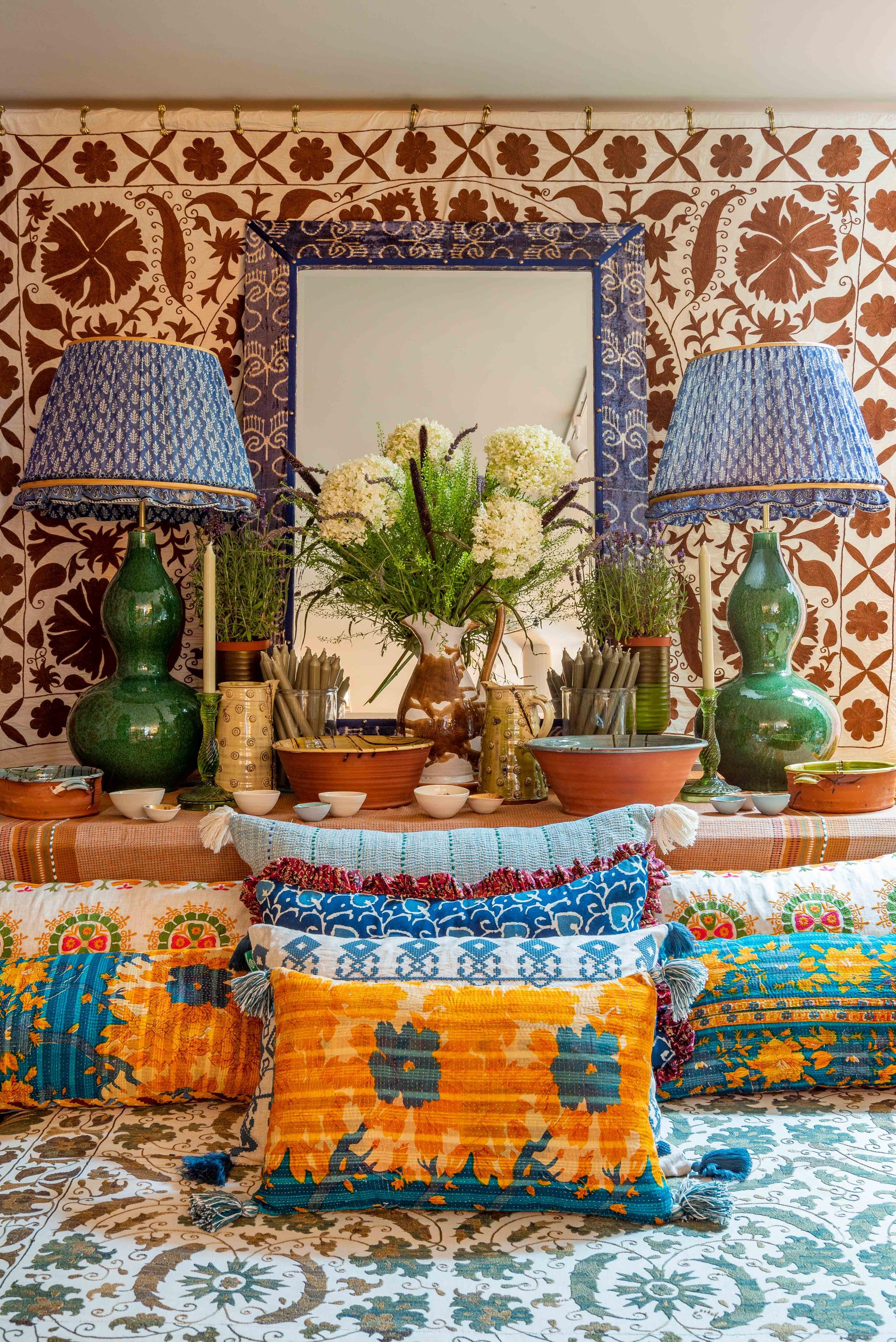
5. Texture
If a room is lacking texture, it can quickly start to look flat and uninspired, but one of the best ways to make an interior feel evergreen is to make it feel inspired, and reflective of you rather than any one particular style.
Keep in mind that certain textures go through their own ‘style cycles’, just like colour, print, and shape. The early 2020s saw a big wave of popularity wash in for velvet and crushed velvet, although it wasn’t particularly long-lived. Synthetic fabrics tend to be more susceptible to these trends, since they’re very cheap to make (and don’t stay looking good anywhere near as long as natural fabrics like cotton and linen).
What does this mean for you? That it’s best to avoid homing in on one distinctive textile, like velvet, because doing so will only make the room feel one-note (and vulnerable to changing fashions).
Rooms that feature a lot of contrasting textures look sumptuous. They have a lot of depth and interest, tangible even from the doorway, and they will prove inviting for many, many years to come.
6. Time
Creating a truly timeless home does, in fact, take time. If you’ve been locked into the trend cycle for years already, then working out how to distance yourself from it and, instead, pursue your own true style is a gradual process. If you go out and buy-up everything you need to achieve a timeless interior all at once, you’re setting yourself up for fresh disappointment a few weeks, months, or years down the line.
Something we love about timeless design is its ability to reflect the lives of the people behind it. It tells a story of curation – of many years’ worth of beautiful finds, things they could not leave behind, souvenirs and gifts, refurbished pieces inherited through the family and those items we doubt will ‘fit’, but we buy anyway. This is a story that unfolds over lifetimes, so try to resist the compulsion to ‘scrap everything and start again right this moment.
7. Passion
Creating something truly beautiful always requires plenty of passion behind it. It’s easy to feel temporarily passionate about a new trend, and harder to hold onto the self-confidence it takes to feel passionate about your own style and sense of taste.
That is, ultimately, the key – a healthy mix of confidence and passion for what you gravitate towards. If you can find that, anyone lucky enough to step into your home for a visit will feel it too.
If you’re looking for a little extra dose of inspiration when it comes to finding your own sense of style, then take a look at our complete guide to avoiding the trends and finding yourself instead. It takes time but, as you’re sure to find out, it is always going to be worth it in the end.
